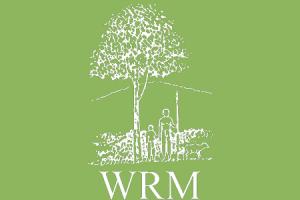Local communities generally perceive forest management as a public affair. And yet, in the household, the public domain and investment fall within the competence of men, since women are responsible for “private,” domestic business. Because of their deciding role in household food security, women are most affected by disruptions in the availability of and access to resources. Hence, latest forest policies fuelled by international and national environmental trends that restrict people's activities in parks, affect local communities and mainly women within them.
Cameroon
Bulletin articles
26 January 2005
Bulletin articles
26 December 2004
It seems that the road to the global market is paved with good intentions. And it utters void statements, it should be added.
The industrialized world tears its clothes off in the face of corruption, which it attributes to Third World country governments. And the World Bank brings together some of the leading logging companies in Africa –mainly European- with environmental NGOs to discuss issues related to Sustainable Forest Management, in what is called the “CEO Initiative”. However, true meaning should be discovered digging into declarations.
Bulletin articles
27 October 2004
Indigenous Baka number 30-40,000 and live in the southern and southeastern areas of Cameroon. They are associated with, among other local communities the Bagando Bakwele, Knonbemebe, Vonvo, Zime and Dabjui farmers. About 4,000 Bagyeli and Bakola live in the southwest, and are associated with Bulu, Ngoumba, Fang and Bassa. Most Baka, Bagyeli and Bakola still rely on hunting and gathering to secure their livelihoods, and even though some also cultivate annual crops, often on the lands of these Bantu patrons, the majority still rely on the forests.
Bulletin articles
27 September 2004
A project to build a hydroelectric dam on the River Lom, a few kilometres downstream of its confluence with River Pangar, presented 13 years ago and suspended in 1999, has been resumed in October last year. The Cameroonian government decided to go ahead with the plans of the Lom-Pangar hydroelectric project, which includes a 50 meter high barrage flooding an area of 610 sq.km and a hydroelectric plant of approximately 50 MW. The first step in the process is a new environmental impact study.
Bulletin articles
12 February 2004
The Center for International Forestry Research has implemented a program called Adaptive Collaborative Management of Forests (ACM) for more than five years. At its most extensive, we worked in 11 countries (Nepal, Indonesia, Philippines, Kyrgyzstan, Malawi, Cameroon, Zimbabwe, Ghana, Madagascar, Bolivia and Brazil); and activities continue in eight. One of the striking elements of this work has been our success at involving women (and other marginalized groups) in our work with communities.
Bulletin articles
13 December 2003
With a population generally estimated to number about 100,000 persons in Cameroon, "pygmies" constitute the best known and the most vulnerable of Africa’s forest peoples. Their lifestyle is closely linked to the forest, from which they obtain their food (meat, fruits, honey, roots, etc.) and the traditional medicinal products for which they are known to be great experts. The forest is their natural habitat in which they continue, for the most part, to be nomadic.
Other information
13 December 2003
As the global economy expands, pressure on indigenous lands to yield up minerals, oil and gas is intensifying, posing a major threat on them, their lands, territories and the resources that they depend on. The World Bank has been an instrument of such process, supporting mining projects that have been even condemned by the United Nations.
Bulletin articles
19 September 2003
From October 13th to 16th the Africa Forest Law Enforcement and Governance ministerial meeting will take place in Yaoundé, Cameroon. Whether this initiative will result in any concrete actions to tackle the immense problem of illegal and unsustainable logging operations in Africa remains to be seen. In the meantime, illegal logging in Cameroon’s forests continues to wreak havoc on the environment, economy and local peoples’ livelihoods.
Bulletin articles
31 July 2003
We have already reported extensively the pervasive environmental and social impacts that the Chad-Cameroon oil-pipeline is likely to have (see WRM Bulletins 66, 45, 41, 35, 14 and 2), but there's already a lot to be said of the present impacts of the three-year long World Bank-sponsored project to build a 670-mile pipeline. The pipeline will channel oil from fields in Chad, through thick rainforests inhabited by Pygmy people in Cameroon up to this country's shores at the Atlantic Ocean.
Bulletin articles
3 May 2003
The Dja Faunal Reserve in South Central Cameroon was created in 1950 by the French High Commission for Cameroon. In 1981 it was named a UNESCO Biosphere Reserve and in 1987 it became a World Heritage Site. Since 1992 the reserve has been managed by the EU-funded ECOFAC programme, which has been supporting the establishment of a network of protected areas across Africa.
Bulletin articles
11 February 2003
"We are born in the forest and we do everything there, gather, hunt and fish. Where do they want us to make our lives? They say we cannot go to the forest - where are we supposed to live?" Baka community member from the Lobéké and Boumba region.
Bulletin articles
2 January 2003
The Chad/Cameroon Oil & Pipeline project (see WRM Bulletins 45, 41, 35, 14 and 2) is reaching critical milestones. Most construction activities are scheduled to be completed by July 2003 and initial oil sales could take place as early as November 2003. As a result, completion of construction is more than a year ahead of schedule which had initially been planned to be finalised by the end of 2004.
